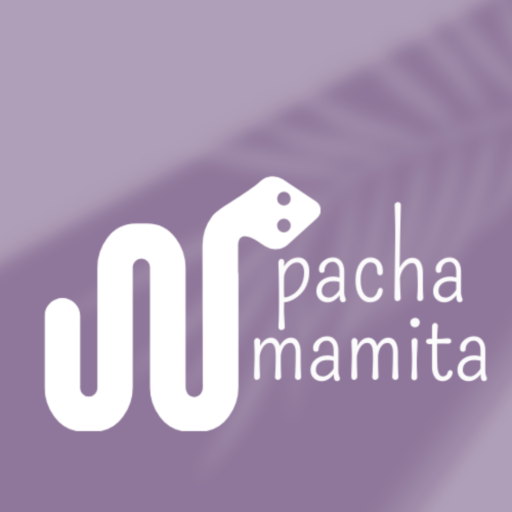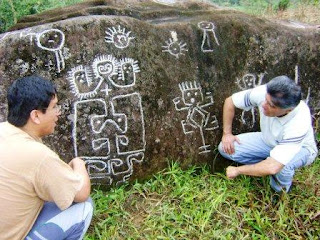By Manuel Palacios*
The complex problems of the origin of peoples and culture cannot be solved because the American continent has been excluded. In our terrestrial unity, prehistoric peoples carried out their movements, stirred, formed and disseminated our current cultural heritage.
As an ethnographic researcher of the customs, medicine, languages and ritual symbolism of the ancestral peoples of America, I cannot but agree with Móricz. We have been accustomed, in a sort of timeless colonization, to think that it was only with Columbus that culture, civilization and faith arrived.
The published scientific studies, supported by voluminous books and ostentatious academic titles, seek to establish that no important civilization existed in America apart from the Mayans, Incas and Aztecs; that the rest of the human groups spoke such diverse languages that it was impossible for them to understand each other, much less with their neighbors. Any criteria that deviate from the conception of this continent as an “eternal Neolithic” are branded as lies, or accused of lacking scientific rigor.
I am not prejudiced by an academic title, which has been a great obstacle in not having any support to publish the results of my research; however, that same independence has allowed me, like a child who is surprised by everything, to see what ordinary eyes cannot see: the possibility of pre-Columbian interoceanic contact, based on the affinity of lexical roots between peoples and civilizations such as the Karians, Magyars, Sumerians, and Etruscans in Europe and Asia; and the Kañaris, Shuaras, Kunas, Karas, Karibes, and Guaranis, among others, in America.
Hector Burgos Stone, author of Amaraka, Land Without Time, maintains that this was the name given by the Hindus to the “land of the immortals”, from the Sanskrit A: no; mara: death and ka: land; where Mount Meru or Meri was located, and where the Vedic civilization of India originated. We now understand why they referred to Bharata-Varsa or the original homeland as the “land of splendorous greenery in the form of a divine woman”, since the feminine characteristics according to this society decreed that women should have wide hips and generous busts and minimal waists as excellent. It is not necessary to clarify which continent fits this description; the intelligent reader will have already made a mental image and reached his own conclusions.
In the chronicles of the conquest it is said that the Central American mountain system (part of the Andes) was known as Amerrique. Centuries later, the naturalist Tomás Belt and the Nicaraguan philologist, Alfonso Valle, stated that this name meant: “Place of much wind”; while for José Dolores Gámez, historian of Masaya, it means “Country of the wind” and for the Salvadoran Santiago Barberena, “Extensive region”. In any case, it is clear that Albérigo Vespucci was not the inspiration for the name America, but that it was an ancestral name of the continent.
For my part, I have discovered that in modern Hungarian the lexical roots that shed light on this ancestral name are still preserved: the word A is related to territory, Mer to draw water or emerge from the water, and finally Iker, which means twins or brothers born from the same womb. This meaning is reinforced by what Móricz said in the aforementioned book: “The Magyar people trace their genealogy back to the two progenitors Gog and Magog, and their traditions place the ancestral homeland in the “Center of the World”. This tradition is still preserved by the city of Quito, which calls itself the “Middle of the World”, and its name preserves the tradition of the progenitors, since its history goes back to the ancient Kingdom of Quitus, which in the Magyar language means: two progenitors. Kit = des and us = progenitors. In modern Magyar it would be: Két-ós”.
This article is merely an introduction in which I support pre-Columbian interoceanic contact, only unlike the theories that have begun to circulate in recent decades, which say that Americans are descendants of Polynesians, or that the “white gods” were Nordic, or that only in the area of Ecuador were as many languages spoken as people, theories based on wild declarations of the conquerors, who were not linguists and who did not have a formed criterion as to the difference between what is and constitutes a language and what is a dialect of the same language.
Criteria such as: “All the land that is said – the one located between the coast of Anegadizos and Punta de Santa Elena – and even the one that will be said, is of diverse languages, so much so that each population has its own language, and although they understand each other with their neighbors, it is with a great diversity of words mixed with the other common ones (Gonzalo Fernández de Oviedo y Valdez, Historia General y Natural de las Indias, 1855, Vol. IV, pg. 121) Which without being so profound, clearly supports the confusion of concept to which I allude, and which cannot constitute itself as more than a partial criterion of the impossibility of understanding the common language of the area.
Another reason for the confusion is reflected in the initial attempt to translate catechisms and religious alignment texts into the vernacular languages of the Bishopric of Quito (current Ecuador, as well as territories in northern Peru and southern Colombia). During the Quito Diocesan Synod of 1593, in the third chapter of the statutes made for the government of the diocese, it is stated: "From experience we know that in our bishopric there are diversity of languages, which do not have, nor speak, those of Cuzco and Aymara and so that they do not lack Christian doctrine it is necessary to have the Catechism and Confessional translated into their own languages; Therefore, conforming to the provisions of the last Provincial Council, having standardized the best languages that could do this, it seemed to us to entrust this work and care to: "Alonso Núñez de San Pedro and Alonso Ruis for the language of Llanos and Atallana; and Gabriel de Minaya, priest, for the Cañar and Puruai languages; and Fray Francisco de Jerez, of the Order of Mercy, for the language of Pastos; and Andrés Moreno de Zúñiga, and Diego Bermudes, priest of the Quillaisinga language."
We do not know if this order was carried out. We have investigated arduously in the Jesuit archives in Quito, in the old libraries of the country, and we have been exempt from traveling to Spain to the Archive of the Indies for economic reasons. However, I assume that the concealment of this material is due to the fact that it would present conclusive evidence of the pre-Columbian relationship between America and Europe. Approximately 70 years later (enough time for these translations to have been made) the Provincial of the Order of San Francisco, Fray Nicolás de Guevara y Castañeda, in obedience to a letter of Orders from the President of the Royal Audience, Don Mateo Mata Ponce de León decrees: that in the Puruaes where not even the general language of the Inca is spoken for the most part, and only the mother tongue is spoken, greater work must be put in place with punishment so that they speak Spanish.
I do not consider myself a pioneer in the comparison of American cultures and languages with those of Eurasia. Michelangelo Mossi did it before, Juan Móricz himself, and more recently the Ecuadorian researcher Ruth Rodríguez Sotomayor and the linguist Natalia Rossi de Tariffi, who in her book “America, fourth dimension: the Etruscans left the Andes” exposes the science of lexicogenetics, which unravels and finds the original meaning of words, which is camouflaged over time in other meanings. Below I present to the readers what constitutes only the index of a work of compilation, linguistic analysis, lexical analysis and above all what I call “linguistic intuition” (and may the linguists burn me).
Starting from the premise that each word has an original meaning, and the object-action meanings, as well as relational meanings that have been added over time; what I do is a two-way work, that is, when there are words that I consider have lost their meaning in American languages, I realize that they still retain their meaning in Sumerian, Hittite and Magyar mythology. The same with people's names. In American languages I have used the Shillipanu linguistic group, which is made up of the Tsafique or language of the Colorados, the Chapalaa or language of the Cayapas, the Cofán, and possibly in ancient times also the Puruhá, the Cañarí and the Chimú. Shillipanu means both “tongue of the rope or middle line” and “royal language”, and according to my theory (which I will not explain here so as not to tire the reader) it constitutes the mythical “sacred language reserved only for the Incas and amautas”, that is, only for the high monarchical leaders of the Inca empire and their teachers.
Manuel Palacios, from Ecuador, is a researcher of iconography, languages and ancestral worldview. He will soon be a speaker on the topic “Forbidden America” at the 7th International Amazonian Shamanism Conference 2011, where topics of Spirituality and Ancestral knowledge will be discussed. He will speak on the topic “Forbidden America” where he will discuss linguistics, symbols and customs common between the Old and New World, before the arrival of Columbus. If you would like to learn more about Manuel’s work, visit this link.
![]()

